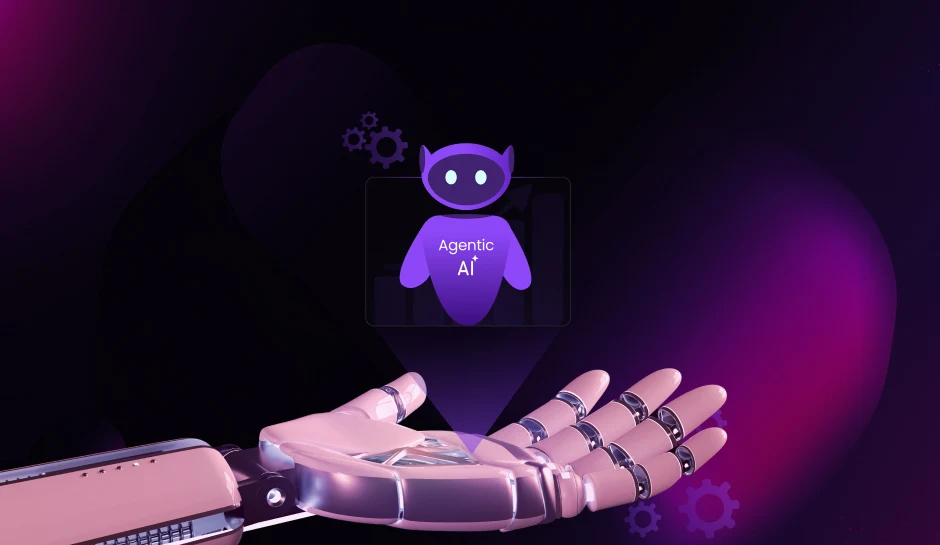What’s the true value of marketing automation beyond email?
In this episode of The Revenue-Focused Marketer, host Hershey talks to Chris Salerno, Chief Marketing Officer at Deal Compass, about building marketing systems that are both personal and powerful. From email campaigns to multi-channel demand generation, Chris shares how early-stage companies—especially in real estate and SaaS—can scale with lean teams, clear ROI, and the right tools.
They explore the evolving role of AI in marketing, aligning sales and marketing efforts, measuring what really matters, and avoiding common traps like vanity metrics and over-automation. Whether you’re leading growth at a startup or looking to optimize your CRM stack, this episode is packed with practical takeaways.
By tuning in to this episode, you can expect to come away with an understanding of:
- Why email is still the highest ROI channel—but only if personalized
- The secret to aligning sales and marketing for better lead conversion
- How to measure success beyond open rates and vanity metrics
- When to use AI—and when to rely on the human touch
- Common automation mistakes real estate teams make
- How to define and evolve your ideal customer profile (ICP)
- Why ROI and actual sales—not just clicks—should drive your strategy
- Chris’s top marketing metrics to track every week
Featured Speakers:-

Chris Salerno
Chief Marketing Officer, Deal CompassChris Salerno is the CMO at Deal Compass, a CRM built for real estate professionals. With a background in Marketing and Economics from the University of Notre Dame and experience running lean marketing teams, Chris brings hands-on insights into how early-stage companies can scale marketing operations without losing the personal touch. At Deal Compass, he leads growth through automation, CRM innovation, and data-backed strategy.

Harshika Chadha
Lead Product Manager - DiGGrowthHarshika is a seasoned product manager passionate about business transformation, design thinking, technology, marketing trends, SaaS security, and human-computer interactions. Her deep interest in the intersection of these fields keeps her at the forefront of industry insights, uncovering success strategies for today’s fast-changing business landscape.
More From Our Content Repertoire
- From Cost Center to Profit Driver: Transforming the Perception of Marketing Why it fits
- AI-Driven Marketing Insights: How Data-Powered Strategies Drive Business Success
- Marketing ROI Calculation: The Ultimate Guide to Measuring Success
Transcript
0:11:
Hello and welcome to another episode of the revenue focused marketer where we discuss anything and everything related to marketing as well as data.
0:20:
I’m your usual host, Hershey, and today we’re diving deep into marketing automation, the engine room behind scalable growth, from email workflows to demand gen programs and lead nurturing, the right ops can really turn your marketing from busy to revenue building.
0:37:
, joining me today is someone who lives and breathes marketing.
0:41:
, welcome to the show, Chris.
0:44:
Thank you, thank you so much for having me.
0:46:
Yeah, Chris is currently the CMO at Deal Campus, and we’re really excited to have you on the show.
0:54:
, so Chris, let’s just start simple.
0:58:
For the marketers who are listening in who think automation means setting up a few drip emails, what should they really understand about the full scope of modern marketing automation?
1:10:
Yeah, so I would say it goes a lot more beyond than beyond just the emails.
1:15:
Emails can be great.
1:16:
We’ve seen some success using those drip campaigns and different versions of them, but it’s really making sure that you’re not.
1:23:
Over making it seem so automized that there’s no personal level to it.
1:28:
So still making sure you have that personal touch to everything you’re doing.
1:32:
You’re not just hitting people on emails, you’re hitting them on multiple different channels cause things get lost very easily.
1:39:
, and still making sure that it, like I said, it is very personal and it’s not just, hey, some computers sending me an email every day.
1:47:
I don’t really wanna be on this email list anymore, things like that.
1:50:
So making sure that you’re doing more than just beyond, OK, I set up a simple email campaign and I can leave it at that, and the business will now boom because of one email campaign we did.
2:02:
No, definitely.
2:04:
, but email still ends up being one of the highest ROI channels, right?
2:09:
So and so many teams kind of treat it like a one-way blast.
2:13:
So what’s working right now in email marketing that actually nurtures leads versus just like, you know, annoying them.
2:21:
Mhm.
2:22:
I think kind of like I said, that personal touch of, we, we tried a campaign where we still added in some personal level to the campaigns, the base of the email was very similar for every person we sent it to, but made sure that or putting maybe different buckets if they had a slightly different position at the company or if the company was slightly different across different areas that we were trying to hit, , so making sure it wasn’t just.
2:49:
Hey, this is a base email blast of this is what we do and we’re not really invested in what you do as a team.
2:55:
, so really invest in what your clients, , and perspective customers are doing.
3:01:
So it’s not just sending out an email blast of, hey, we’re trying to sell you something, you should come purchase our product.
3:07:
Mhm.
3:08:
Definitely.
3:10:
Let’s switch gears now to demand generation with paid organic and partner programs all like, you know, firing at the same time.
3:18:
How do you tie them together with automation to kind of drive pipeline?
3:23:
Mhm.
3:24:
Yeah, so we’re exploring a few different options at this point right now as well.
3:28:
, so we’re looking into finding new demand using affiliate marketing, , which has been a big push for us recently.
3:38:
And I think that’s a, a pipeline that we’re really exploring more versus we were just doing our own paid marketing whether we’re paying for leads for our email campaigns or finding different versions of paid marketing on social media.
3:51:
Yeah.
3:51:
, and I think they can work well together where you can have your email campaign still you’re paying for those leads maybe, but you still have other avenues that you’re getting with your demands.
4:03:
So getting demand from social media through your affiliates, through.
4:07:
Multiple different channels.
4:09:
, and it’s, it works well because maybe someone who got your email kind of ignored it, but then they see something again on social media that just happens to pop up on their feed.
4:19:
Now they’re like, oh, I do remember this.
4:20:
, I’ve seen this before, maybe I should look more into this a little bit.
4:24:
So hitting those different channels can really reinforce your product with people.
4:30:
Definitely having those multiple touch points can really make a difference.
4:34:
, and kind of talking about like, you know, one of the bigger issues a lot of CMOs face, , is kind of ensuring the alignment between marketing and sales.
4:46:
, so, you know, do you have any advice for, , how can we kind of stay on top of that and make sure, especially when automation is also in the process.
4:58:
, how can we make sure that the journey is more aligned?
5:02:
Mhm.
5:03:
Yeah, so as, as in my position right now because we are a startup, I’m juggling a lot of different hats, , so I’m heavily involved in sales as well, and that’s a problem that we went into, , and so really making sure we go from we’ve hit them on the marketing side, we’ve brought in the demand, we’ve brought in whatever, however we may have found them through whatever channel, but then.
5:25:
Flowing easily into the sales cycle.
5:27:
So really also finding ways where maybe we can automate our sales process in different ways where they don’t have to necessarily be talking to us 24/7 to close a deal, , but still making sure that we know who we’re working with and keeping that personal touch to it because that is something that we think makes us stand out, , so still.
5:46:
Making sure that they know we’re here with them every step of the way, , in that sale and having it flow easily and getting all their information from that first touch point of outreach all the way to the meeting with us to then closing so that we have all their information that we need to make sure we’re selling them how they should be sold and helping them in every way possible.
6:09:
Definitely, , a question that I get asked often is like, you know, what kind of tools should teams that are just starting to scale their ops should kind of prioritize.
6:21:
So do you have any hot take on this?
6:24:
, well, as a company that is a CRM, , we obviously love our own tool deal compass, but we are very much real estate focused, so.
6:33:
We use our own tool for a lot of our stuff, , just in terms of contact management, things like that.
6:40:
, but there are many different email tools out there as well that work very well.
6:45:
, I don’t know if I have necessarily a hot take.
6:47:
, I’ve, I’ve seen a lot of different ones that work well.
6:50:
We’ve used different ones.
6:51:
I’ve used different ones in previous, , campaigns for previous, , companies and people.
6:57:
So I don’t know if I should have a hot take.
6:58:
I think it kind of just whatever fits your workflow the best, , which is why we are a real estate focused CRM because we felt there was no one really meeting that real estate work flow the way it needed to be met.
7:10:
, so that’s what we built ours out for.
7:13:
But and there are many different campaigns and apps and websites that can help you operate.
7:20:
You please.
7:21:
, and I think just making sure you don’t have the overload of, oh my goodness, this website offers me so many different tools and features, but you don’t necessarily have to use all of them.
7:30:
You can use what fits you, what is gonna work best for you.
7:33:
You don’t want to get so lost in all the minute details that you’re losing the big picture of.
7:38:
We’re trying to get leads, find demand, and eventually close these deals.
7:44:
No, definitely.
7:45:
I think you kind of talk there about like, you know, having that personal touch really makes a difference.
7:52:
, in today’s world where AI is being used for a lot of these aspects.
7:58:
Mhm.
7:58:
How can we kind of ensure that that personalized touch is still, you know, there?
8:04:
Do you have any thoughts on like, you know, how AI is really changing this side of the game now?
8:11:
Yeah, A is definitely changing it.
8:13:
, I’m not the crazy tech person.
8:15:
I’ll be the first to admit that, so I don’t understand necessarily all the.
8:20:
My new details of AI and how it’s functioning.
8:22:
I’m not the one coding it, but it definitely takes away from some of it in certain aspects, but it can also be extremely helpful.
8:30:
, it, it’s helpful to us to find information a lot faster than other things, , or how we used to do it.
8:35:
It’s helped us find leads, it helps, helps us in a lot of ways and can help, , marketers, you know.
8:42:
Better improve whatever their campaigns are doing, or look at the data and say this is where we fall short, maybe with this campaign or that campaign.
8:49:
But it does take away the personal touch sometimes if you’re overusing AI to write every email and respond to every piece of communication you have with a potential client.
9:00:
our current client.
9:01:
, so it definitely can take away from it, but at the same time, it’s a, a very helpful tool that can help, help you be more productive in your business in many different ways and keeping you organized and just helping you break down data and better improve multiple different areas of your business.
9:18:
Definitely, , and like, you know, what are some common trap, , real estate teams fall into when it comes to automation because you know, you’re focused in this industry.
9:29:
I’d love your take on that.
9:32:
Yeah, I think some of them do try to overcomplicate it.
9:36:
, like I said, they get lost in all these tools and they think it’s the greatest thing in the world and even in this case coming back to AI they’re like, well, we don’t, we don’t have an AI integration at this point we are looking to add one, but They’re like, well, we just want AI to do everything for us.
9:51:
And it’s like, well, then you’re losing the whole point of your business because you don’t understand the business either.
9:56:
There’s, it’s helpful, but you need to still understand what’s going on within your business.
9:59:
, and that’s why we are, we don’t have a million tools.
10:03:
We’re trying to just keep it simple, get them directly to the point, measure what they want to measure, track all the leads and everything they want to track, , and keep all their tasks and everything.
10:12:
Organized and so that it’s simple, it flows smoothly, but it’s also built out to where they can customize it to how they work.
10:19:
, and I think that’s the biggest piece kind of back that finding one that helps you work the way you work.
10:24:
Everyone’s slightly different.
10:26:
Everyone runs the workflow slightly differently.
10:28:
And so that’s the biggest piece and a big trap that people fall into is, hey, we’re using a tool, we’re using this AI, and it’s forcing us to work this way, but I don’t like working this way.
10:37:
It’s inefficient for me.
10:38:
It’s not working properly.
10:40:
And so that’s kind of the The detriment of maybe using AI or the trap they’re falling into hey, we’re just gonna let it do everything for us, but then we have no clue what’s going on within our business.
10:50:
Yeah, no, definitely.
10:53:
And another aspect that I’ve really been hearing in the industry when it comes to marketing is ROI.
10:59:
There’s a lot of like, you know, even a new role of CRO that’s been really popular lately.
11:06:
, so, you know, especially for teams that are trying to focus and move forward from marketing being a cost center to sort of, you know, investment.
11:19:
, there’s been a lot of focus on ROI.
11:21:
So what are your thoughts on, like, you know, how can CMOs really ensure that they’re able to prove the ROI of their marketing, especially when there’s, you know, multiple channels that you now kind of need to focus on.
11:36:
Yeah, I mean, I think it definitely needs to be broken down by different channels, , to look at kind of, hey, like what channels may be the most successful, maybe where can we invest more money in these, but kind of like I mentioned earlier, the multiple touch points are big and you can’t always necessarily track that it’s the same person who you hit twice because the channels are so different or whatever it might be.
11:57:
But it is.
11:57:
Important to have the multiple touch points and you can prove that, you know, these people, it happens with me all the time with even just basic products that I’m buying every day of like, hey, maybe I saw this in an email or I saw this on one social media platform, and then it popped up on another, I popped up on Google, and now I know what that product is.
12:15:
I’ve seen it, and now I’m more interested in it because it’s familiar.
12:18:
.
12:19:
And I think that’s a a a proof in itself if you can just relate it to everybody’s had that experience before.
12:25:
And so I think that pretty well that, you know, you need these multiple channels, even if one channels maybe slacking a little bit compared to others, but then also breaking it down by channels, seeing what’s doing the best for you and your team, and then being able to invest more money possibly in that channel, because that’s really where you’re seeing your growth, seeing a lot of that revenue come from.
12:47:
Mhm.
12:48:
Definitely.
12:49:
, kind of talking about lead nurturing here.
12:52:
What does lead nurturing really mean to you and specifically at Deal compass?
12:58:
Yeah, , kind of again, just keeping that personal touch, but making sure that, you know, you’re really walking with those leads the entire time, finding them, ensuring that You have that connection, , especially as we’re a smaller company.
13:13:
It’s, you know, I want them to know that I’m gonna be there, we’re there with them every step of the way.
13:18:
They can send me an email, shoot me a text, do whatever it might be, and I’ll get right back to them as soon as I can.
13:23:
, even on my busiest days, you know, making sure I make time for these people that, especially if we’re just talking to them, , and Ensuring that they know that you’re there for them and you’re not just a number or a random name on an Excel spreadsheet that they’re, that you’re reaching out to, , because there should be that personal touch to it that that level of, hey, we, the end of the day, our goal is to help you improve your business and we want you to know that.
13:47:
And obviously, yes, you’re helping us with our business and making us money, but we are helping you and that’s ultimately what we’re in the business of doing.
13:55:
Definitely.
13:56:
And is there such a thing as following up too much?
14:00:
Like, do you have a golden route for what the right frequency it is to kind of engage with your audience?
14:07:
, yeah, I wouldn’t set a number, I wouldn’t say a specific number of follow-ups we’ve set, , would as like, oh, this to be followed up too much, , a little bit of a feel thing, at least in my opinion of, hey, OK, we’ve sent a few messages in the past couple weeks, we can probably.
14:24:
I let that sit for a minute or two and then follow up in a, maybe a month or so or a couple of months and see how it’s going.
14:30:
, but yeah, definitely, you need the follow-ups.
14:33:
I mean, emails can get lost pretty easily if you’re going back to, you know, marketing.
14:37:
, these people are busy.
14:39:
A lot of the time, it’s not intentional that they’re ignoring your emails.
14:43:
, and so, following up is always a good thing, sending a few follow-ups and then kind of maybe letting it sit for a little bit before following up again.
14:51:
And just, hey, I would love to continue talking about this.
14:54:
, but yeah, I wouldn’t say necessarily a golden rule or golden number, but definitely feeling it out of I’m not gonna send 10 follow-ups 10 days in a row.
15:02:
, but making sure I’m following up every few days at first and then letting it sit for a little bit longer.
15:09:
Makes sense, definitely.
15:11:
And as a CMO, like, what are maybe the top three marketing metrics that you got to check on every week and why are they so important for you?
15:21:
Yeah, so definitely, , we do wanna, we look at ROI, , quite a bit.
15:26:
Just like if I’m talking to my CEO kind of, hey, what, what are we looking to maybe change up now?
15:33:
What new channel and, OK, what would be our ROI on this channel, potentially, , things like that, .
15:42:
We are ROI has been big with our new affiliate outreach trying to determine what the ROI could be on that because we are paying out to the affiliates, .
15:52:
In terms of our email campaigns, we look a lot at the, the open rate and response rate, , quite a bit.
16:00:
, we’ve seen those dip at different times trying to figure out, OK, what, what did we change maybe in the email that made this dip quite a bit compared to last time, , which I think is big.
16:11:
And then also looking at because we still are running our sales meetings and talking to every client at this point that comes in, , how many of those.
16:19:
Can we convert from maybe a response to then the meeting with us, a sales meeting, just to make sure that, like you said, you’re connecting that marketing to sales and it’s flowing easily cause it’s great if they’re responding, but if all the responses are negative and they don’t want to talk to you, then you’re really not doing anything with it.
16:37:
So making sure that not only are, is our message worth responding to, but it’s really hitting home and getting them to say, OK, we wanna check this out.
16:43:
We wanna look more into your product.
16:46:
No, definitely.
16:48:
And , what do you think are like, you know, maybe common mistakes people make when they’re trying to measure marketing success?
16:55:
Yeah, I think a trap I fell into very early too is like, , a lot of, a lot of that, oh well, our response rate is super high, this is great, or our open rates super high, that that that’s great.
17:08:
But then we haven’t converted anyone.
17:09:
Like no one’s, no one wants to talk to us, no one wants to sit down and actually look at the product.
17:14:
No one’s using the product.
17:16:
, and I think that’s an early trap.
17:17:
Yeah, this is great.
17:18:
You’re, you’re at least getting a little bit of an in with these people, maybe they’ll come back later, but It’s not the ultimate goal.
17:26:
So not getting too deep into one or two metrics and remembering that the ultimate goal is eventually to have sales, , is really important and all these other metrics are great, but at the end of the day, it’s sales and ROI are the two most important things, and you need to make sure your, your investment is profitable and that you are closing those deals at the end of the day.
17:47:
Definitely.
17:49:
And like, you know, a lot of companies fail early on in identifying their right ICP.
17:56:
So is there a strategy you kind of had when you were figuring that out for Deal Compass?
18:03:
And how do you kind of recommend going about, you know, defining an ICP?
18:08:
Yeah, so this was another struggle that we had early on because our product can be used across multiple different channels of real estate and even private equity and investment.
18:18:
And.
18:19:
, we still do think we can reach other, other customers outside our ICP, , but early on, and since we are still fairly early on, making sure we’re hammering home that ICP and that’s helped us have more success recently.
18:32:
But it was kind of just sitting down and saying, OK, we’ve done our market research, who is the most responsive to this product?
18:38:
OK, this is Who is most responsive?
18:40:
Does that match maybe who we thought would be?
18:43:
Do we need to change what our original thought of our ICP was, , and really just continuing to ask more questions, as, as many questions as possible, , of ourselves and maybe people who are already using it and seeing, OK, this is how they’re using it.
18:57:
This isn’t really how we thought they might be using it.
19:00:
, so maybe our ICP is different than what we had envisioned, .
19:04:
And that’s kind of how we went about it is like we dove down, we, we’ve talked about it, we still talk about it, we’ve talked about it multiple times like, OK, things are slightly shifting this direction or that direction, , and just continuing to, to hammer home on those.
19:18:
And then if we find what we think is the ICP and we start reaching out to to that group of people, and it’s clearly not, then being willing to pivot pretty quickly and go to the next group that we think it could potentially be.
19:31:
Definitely.
19:32:
And as a CMO, what’s your perspective on AI being used for targeting or like, you know, customer insights?
19:40:
, I’m trying to understand like, you know, what do you think is OK to use AI for in this day and age?
19:47:
And where does it kind of come to, like, you know, crossing that boundary?
19:52:
Yeah, I think, , we don’t use, I don’t use AI to dive into crazy personal details of of people or leads that we have.
20:01:
, that’s all done by what, what I’m finding myself, but using AI to find general things, , like if you’re using AI to help you.
20:13:
, define leads by area or like area of the country or different things like that that are pretty broad.
20:19:
I think that’s very much OK.
20:21:
Those are things that are widely available to people, but not using AI to dive deep into people’s maybe more personal information.
20:28:
, I, we definitely don’t use that.
20:30:
I think that crosses the lines there.
20:32:
But using the I use to do broad things or to help with the campaigns in general, he, like clean up my wording here, make this flow a little better, things like that.
20:41:
, definitely something that AI is very helpful for and useful for.
20:45:
And I think breaking down the data of campaigns, AI has been great with of, hey, we just ran these campaigns.
20:51:
This is all the data that we pulled from it, , in terms of like all the metrics that you have responding from it.
20:58:
Can you break down the data of what leads were most responsive, what leads, , we, did we do poorly with, where can we improve things like that.
21:06:
I think it’s very helpful.
21:08:
, yeah, I’m not diving too deep into maybe one specific lead with AI and having it run a crazy search on somebody.
21:16:
No, definitely.
21:18:
And when we kind of talk about, you know, the future of marketing, what really excites you?
21:24:
I think AI itself is very exciting.
21:26:
I think it’s exciting to have something that’s very useful and helpful at continuing to grow, , and that can break down this data a lot faster than me scrolling through my Excel of all this data and all these numbers that I have put together.
21:39:
, and I think it’s exciting that.
21:42:
You know, it’s just continuing to find new ways and new, new ways to reach people.
21:48:
I mean, social media is ever changing, , there’s so many different channels and I think that’s part of the fun of it is like, hey, what’s, what’s most successful?
21:58:
What can we play with here or there to make this a little bit better and what we thought was going to be our most successful channel at first didn’t work at all, and then the next one maybe did.
22:07:
And I think that’s exciting to me there’s just so many different ways to reach people now.
22:13:
And so it’s not just, hey, we’re gonna send a few emails, that’s really the only way we can reach people’s email and.
22:19:
Hard copy mail, that’s the best, the best thing and most exciting to me.
22:24:
Yeah, definitely, and real estate is still so people driven, right?
22:29:
So do you see a place for AI here or is it just too personal to, you know, kind of not be.
22:36:
Impacted by AI.
22:38:
Mhm.
22:38:
I mean, I think there’s definitely a place for AI, , kind of like I mentioned, , it can help more on the internal side of the business, , and the marketing, but maybe not so much on the, the direct outreach, , in terms of talking to people.
22:52:
It’s always gonna be very personal.
22:53:
People are always gonna wanna hop on the phone and talk to you, .
22:57:
Even if we’re not clients, but they’re on the phone with their clients all day long.
23:00:
And so I think being on the phone with us is the same for them, , even though we’re not their clients, it’s very much the same, and they wanna talk to us and get to know us and know who’s behind the software they’re using.
23:14:
, and I think that’s a big thing.
23:17:
That is helpful and different about us is we wanna have them put a face to our name.
23:21:
We don’t wanna just be a big software company.
23:23:
They have no clue who’s behind there.
23:24:
They have no clue about when they need support.
23:27:
, so I think that is a big thing of it should still be personal to a, to an extent, and they should know who they’re dealing with.
23:34:
Definitely.
23:35:
And I guess reflecting back on your own journey, what’s maybe a failure or misstep that kind of help you grow and, you know, as a marketing leader now?
23:46:
-huh, I think, , I dove too deep into certain minute metrics quite often early on of, oh, this metrics so great, we should just focus on this, and I was like, well, everything else around it’s failing.
23:58:
, and I think, , having people around me that kind of straighten me out and we’re, OK, well, that metric’s great.
24:06:
Yeah, you’re doing really great there, but that’s not converting and kind of that, like we talked about that going from marketing to sales, , and really being able to merge.
24:15:
To, , because when I first started, I was really only doing marketing and outreach.
24:20:
And then I started to dive more into the sales side as well, and I could see how it wasn’t really converting between the two.
24:26:
And once I was able to be more involved in both, I think then I started to realize that I needed to change things up and ensure that we were flowing smoothly from marketing to sales.
24:39:
No, definitely.
24:40:
I think what you shared is like a prime example also for why we worked so hard on our product at Dick Roth because we wanted people to step away from sort of the vanity metrics and be able to really focus on the ROI and, you know, what really can works.
24:57:
And I think it’s definitely reassuring to know after our conversation here today also that, you know, this is a growing need and something that definitely needs to be resolved.
25:09:
Yeah.
25:09:
, I, I’d love to hear, you know, what kind of personally keeps you inspired or keeps you learning in this fast changing world of marketing and technology here.
25:21:
Yeah, , I think one I do truly believe in our product, .
25:27:
So being able to go talk to people about a product that I’m passionate about and believe in is very helpful.
25:33:
, I mean, there’s a lot of the ups and downs of being a startup and it’s hard, , and it’s, you know, you have the great days and the days that maybe aren’t so successful, , but.
25:44:
I think that keeps me passionate because I believe in our product and that we can help people, and I, I truly believe in the people around me at our business and that, you know, we want to create something that does change the lives of many people.
25:56:
And I mean, yes, we hope to be successful and have a very successful business that’s very profitable and making a lot of money, but just changing the lives of people around us, .
26:07:
And knowing that we know so many people in real estate on a personal level before we even started this and seeing how they work and seeing how frustrated they get at times, and then knowing our current clients and talking to them and seeing that we’ve helped them in the same way of, hey, like their life is so much, so much less stressed now.
26:24:
They, they understand things, it’s going so much smoother and feeling and so knowing that we can help people beyond just being passionate about the product is also a, a great motivator for me.
26:36:
That’s wonderful.
26:38:
And you know, for our listeners that kind of want to connect with you or learn more about Deal Compass, where can they really find you?
26:46:
Yeah, so Dealcompass.co is our website.
26:49:
A lot of information is left there.
26:50:
They can either connect with me or our CEO Matt through the website.
26:56:
, and then our LinkedIn is very active.
26:58:
That’s probably our our biggest social media channel.
27:01:
So, , our Deal Compass, LinkedIn or my LinkedIn, , Christopher Salerno is a, a very active LinkedIn page as well, so those are the best places to reach me.
27:12:
Awesome.
27:13:
Thank you so much.
27:14:
Chris, this has been such an exciting session and I know I’ve gotten to learn a lot.
27:19:
So I’m sure our listeners will too.
27:21:
Thank you so much for joining us today.
27:24:
Thank you so much.
27:25:
I really appreciate it.
27:27:
Yeah, and for our listeners, , I guess just continue following us for, you know, the best and latest advice on what’s happening in marketing as well as technology.
27:38:
It’s always such a privilege to be able to kind of, you know, bring in new guests and talk to you guys, , and kind of learn, you know, new things in the process.
27:47:
So thank you again, Chris, and thank you to everyone for joining.




